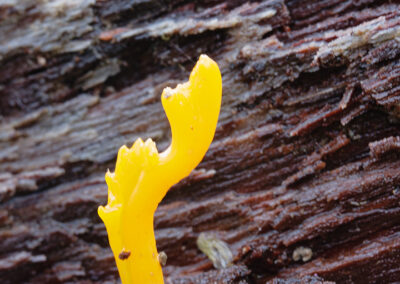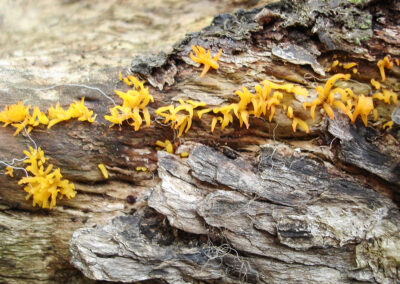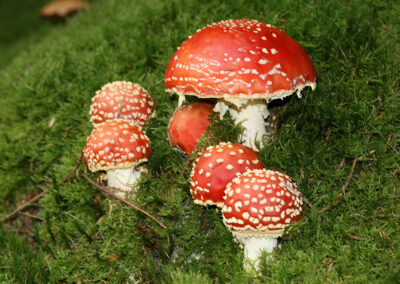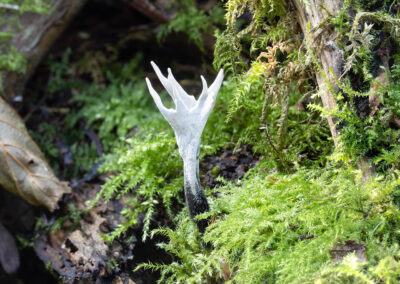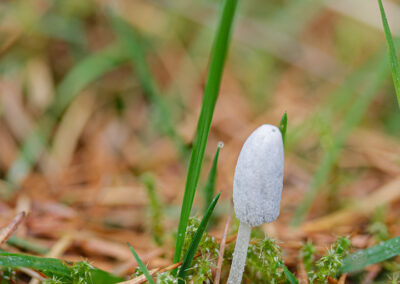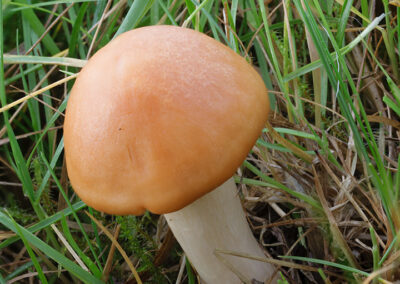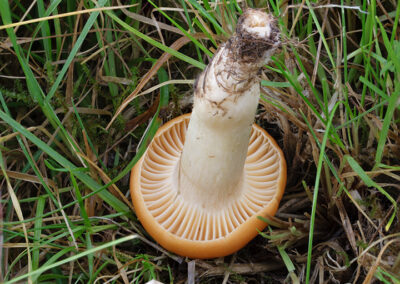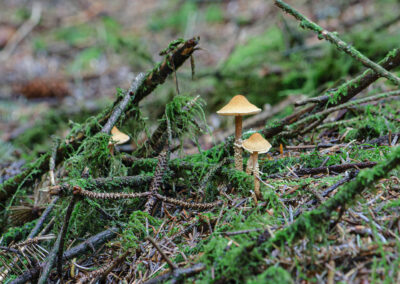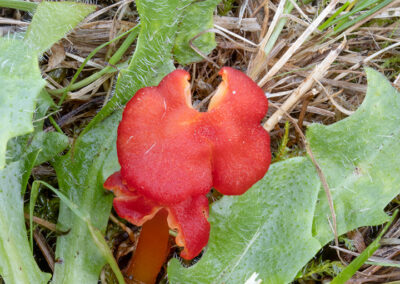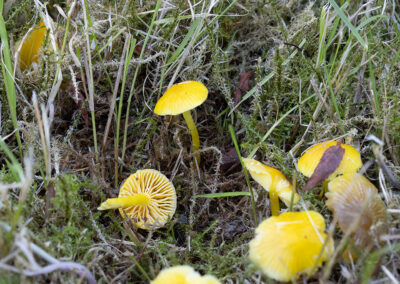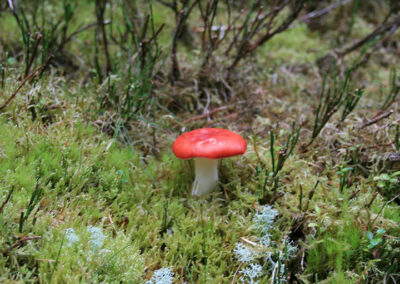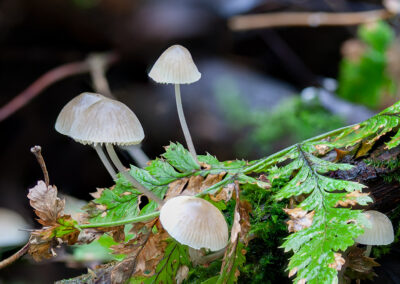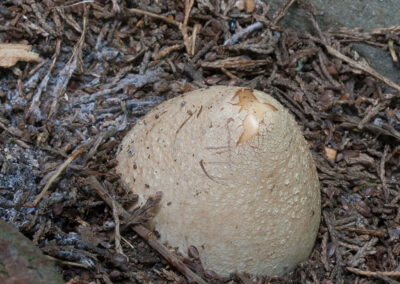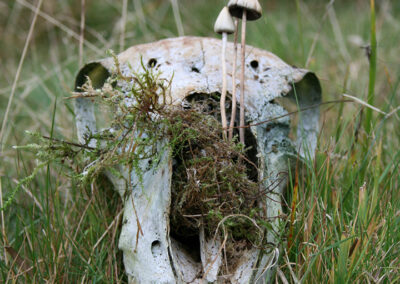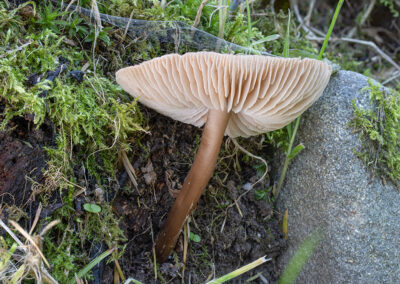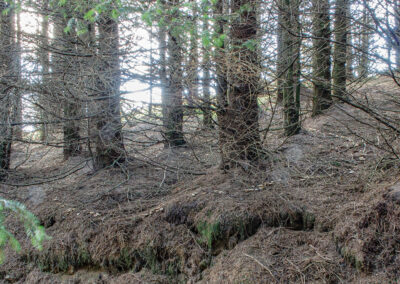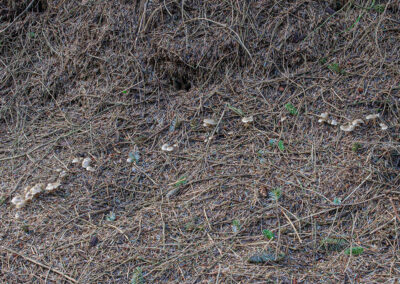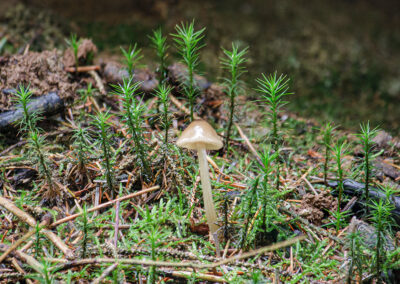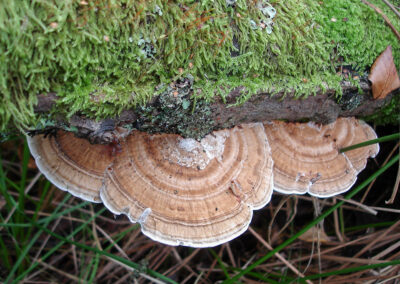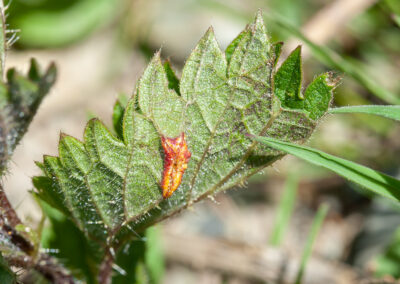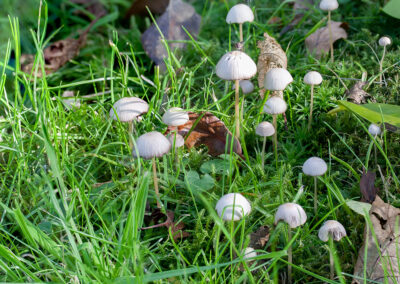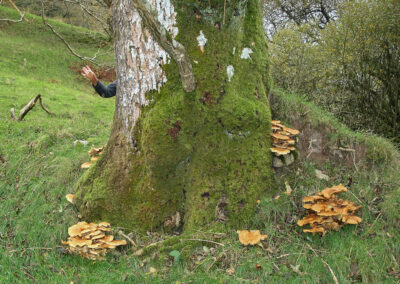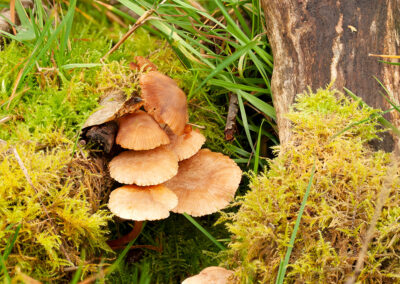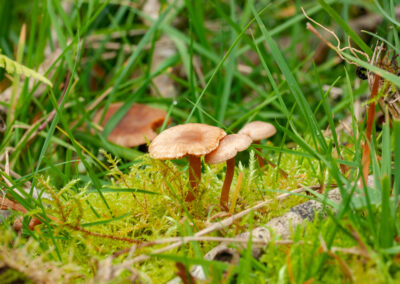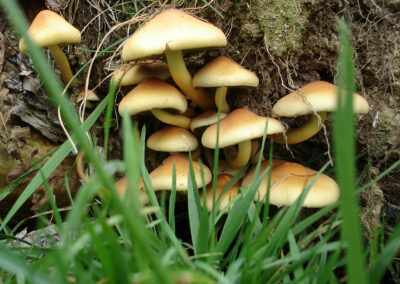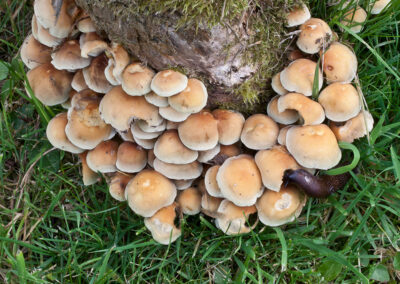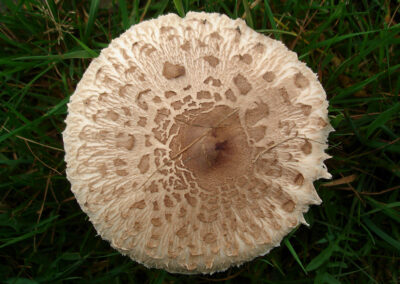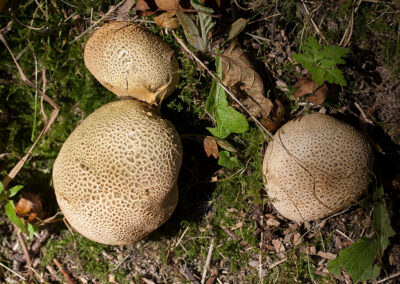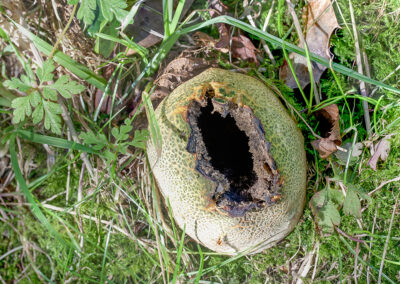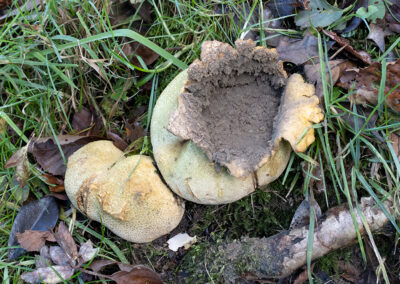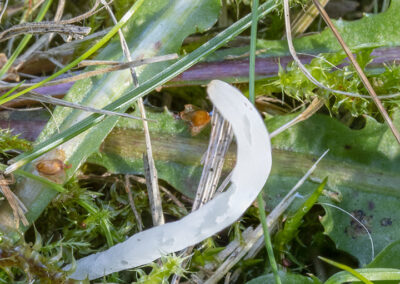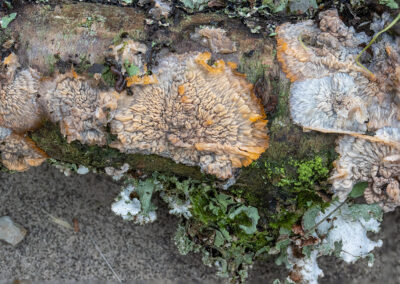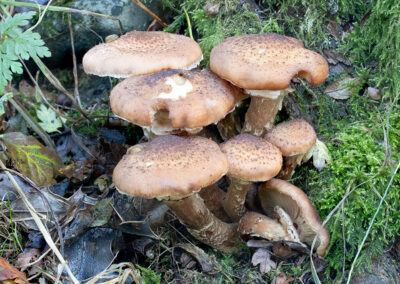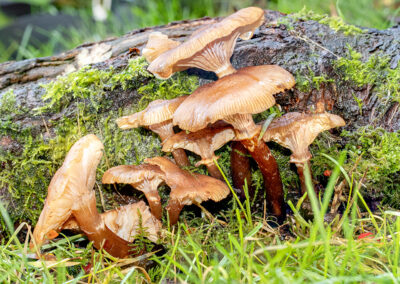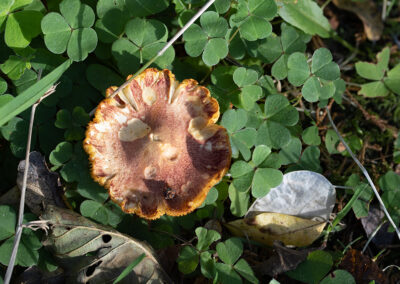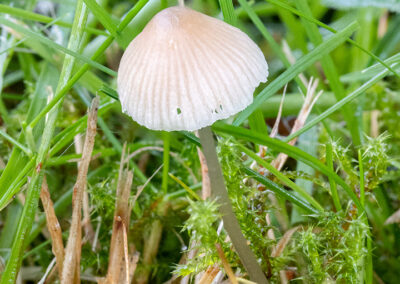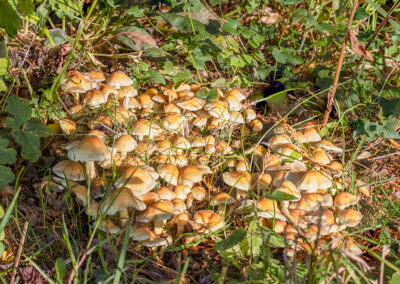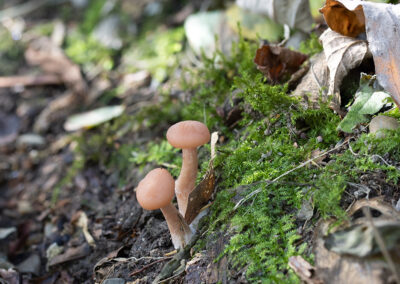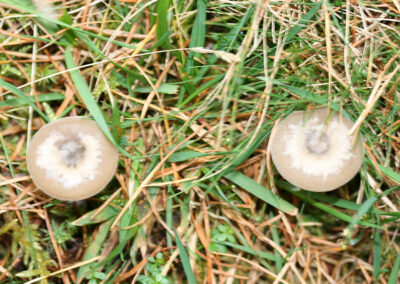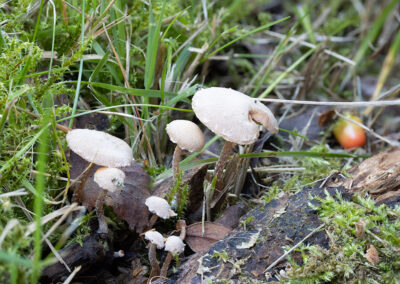Fungi & Slime Moulds
Fungi and slime moulds are not related, though for a long time it was thought that they were; I have put them together here as they can sometimes be confused with each other.
Fungi
Although they are generally thought of as the mushrooms we often see, yeasts and moulds are also fungi. There is enormous diversity in the fungus kingdom, in life cycles, ecology and morphology, so I will only include brief generalisations here, and dealing only with those we see as ‘mushrooms’. Without fungi the world would look very different, as they are responsible for most of the recycling of dead organisms, both plant and animal, and are an essential part of life on earth.
Hygrocybe coccinea (Scarlet Waxcap) in glandernol garden
Hygrocybe coccinea (Scarlet Waxcap) in Glandernol garden
Hygrocybe chlorophana (Golden Waxcap) in Glandernol garden
Hygrocybe chlorophana (Golden Waxcap) in Glandernol garden
Psilocybe semilanceata (‘Magic Mushroom’ / Liberty Cap)
Psilocybe semilanceata (‘Magic Mushroom’ / Liberty Cap)
Their cell walls, unlike plants, do not contain cellulose, but instead are made from glucans (also found in plants) and chitin, the latter also being found in the exo-skeletons of arthropods. So although these materials are found elsewhere in living organisms, fungi are the only organisms that combine them.
Unlike most plants, fungi do not photosynthesise to produce nutrients, but absorb them, usually from decaying matter. Many of them are parasitic, and not always on dead organisms.
The mushrooms we see are the fruiting bodies of the fungus, most of which spends its life underground or in decaying wood. The main sub-surface body of a fungus grows by means of hyphae – cylindrical, thread-like structures; these grow from their tips, eventually forming a dense network known as a mycelium, which in some species can be several miles across in extreme examples – they can be the largest living organism on earth!
Fungi can reproduce both sexually and asexually, the latter being the most common, usually via spores produced from the fruiting bodies. Microscopic examination of the spores of a fungus can sometime be the only way to determine the species, particularly many of the small brown and white ones we often see – which is partly why so many of my photos are unidentified, as this is something I cannot do. There is so much variety and complexity in sexual reproduction of fungi that I am not going to try to cover it here (also, I do not understand much of it!).
The understanding of the functions and importance of fungi is constantly developing. Much coverage has been given in recent years on the role fungi play in relation to trees, both in terms of symbiotic nutrition, and communication between individual trees, and more is being learned about this all the time. They can also cause many problems to humanity, both in attacking crops and even our bodies.
There is so much more that could be said about fungi, but that’s enough for this site; for anyone wanting to read more about them, the Wikipedia page is a good place to start.
Slime Moulds
Slime moulds are single-celled organisms, not quite plant, not quite animal. There are differences in life-cycle between some species, which I will not go into here; the following is a generalised description of the most common cycle.
Part of their life is spent as an amoeboid protozoan, feeding on bacteria, usually below ground or in decaying wood; they sometimes congregate in a large single-celled, multi-nuclei, plasmodial mass (can be several feet across on rare occasions) which move as a slimy creeping body above ground, which is when they are usually seen. This produces short-lived fungi-like fruiting bodies (the ‘sporangia’), which produce spores; these spores develop into the protozoan stage and the cycle repeats.
At the above-ground stage, if there is a choice of food sources, the slime mould finds the shortest route between them, and if it then finds more options, it sets up a network of plasmodial strands, using the shortest possible routes between the various sources; this ability has been harnessed by scientists and converted into computer programs that have been useful in research, including the mapping of dark matter!
From Wikipedia: “Atsushi Tero of Hokkaido University grew Physarum in a flat wet dish, placing the mold in a central position representing Tokyo and oat flakes surrounding it corresponding to the locations of other major cities in the Greater Tokyo Area. As Physarum avoids bright light, light was used to simulate mountains, water and other obstacles in the dish. The mold first densely filled the space with plasmodia, and then thinned the network to focus on efficiently connected branches. The network strikingly resembled Tokyo’s rail system.”
I have seen slime moulds in Dernol, but have not yet photographed any.
